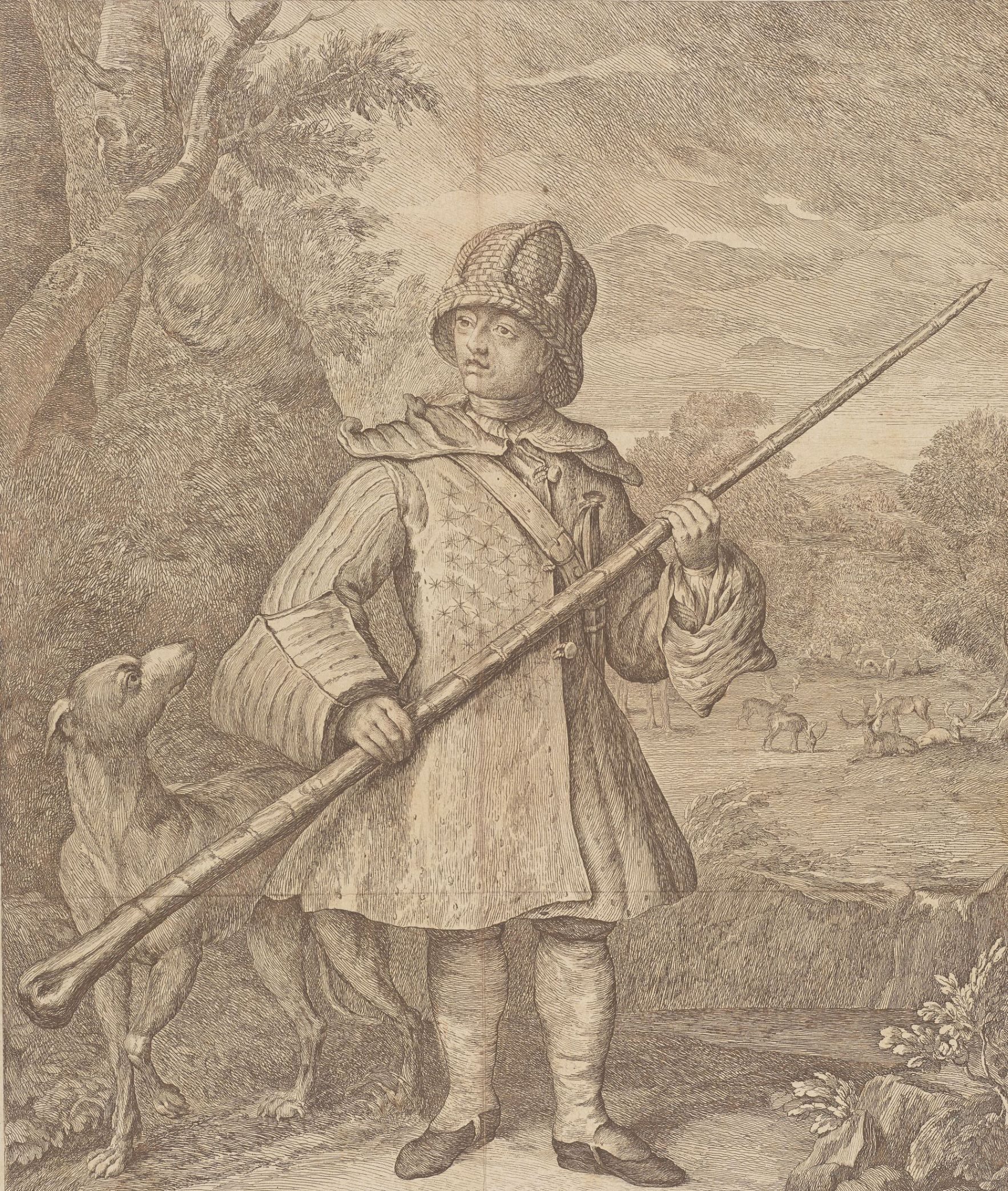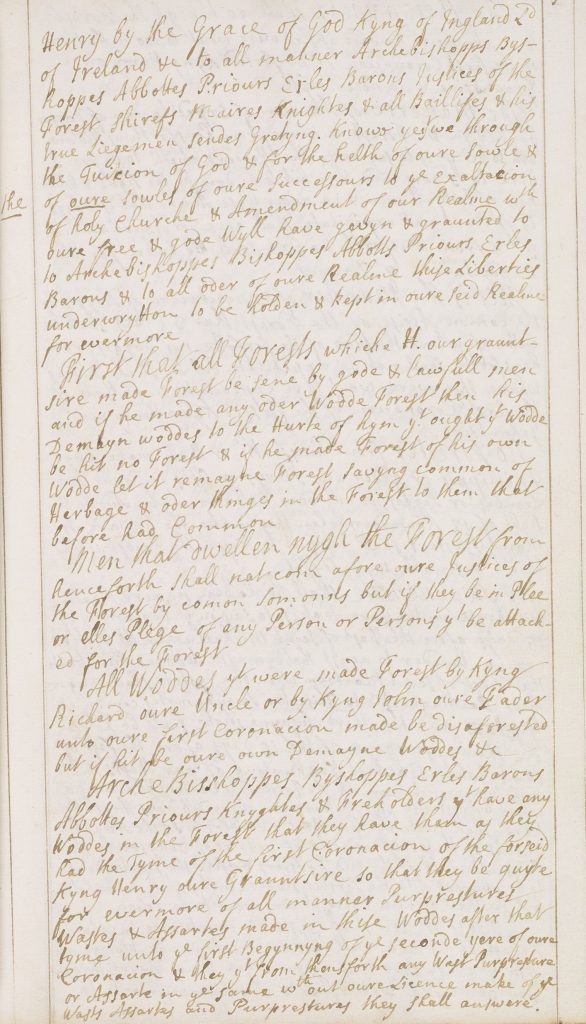
December 14, 2023, by Chloe
Mysteries of the Forest
Sherwood Forest has deep roots in Nottinghamshire’s history, folklore and culture: there is perhaps no other place which is so emblematic of the county. We are fortunate enough to hold several records about this remarkable area – including a collection of two manuscript volumes featuring copies of statutes, ordinances and extracts from the forest courts.
Comparing the first volume (MS 72/1) to other surviving material has shown that it is heavily based on earlier forest books, as a substantial part of the volume features the same content as the Middleton Forest Book, a late-fifteenth century manuscript also held at the University of Nottingham, as well as parts of the early-seventeenth century Exchequer Forest Book, now held at The National Archives. It also includes slightly more recent material, with the latest dated item marked as coming from 1666. On the basis of this evidence, it has been suggested that the manuscript was compiled as a precedent book for reference by local forest officials.
The second manuscript (MS/72/2), which dates to 1744, is also a compilation – made clear by a statement from the front of the volume: ‘A book: Concerning the Forest of Sherwood extracted from two old forest books one in the possession of Sir George Savile Bart and the other of Mr William Watson of Farnsfield.’ The former is today held in Nottinghamshire Archives and the latter is possibly the manuscript that we have just discussed. Indeed, the first 100 pages closely match the early sections of MS 72/1 – those lifted from the Middleton Forest Book and the Exchequer Forest Book. However, it also contains other items suggesting that it was compiled for antiquarian interest rather than as a working reference book: from descriptions of forest terms and offices to a list of meanings of certain blasts on a hunting horn which may be heard in Sherwood.
The origins of both volumes remain a mystery – but in the case of the first, we at least have some theories. It was suggested by Helen Boulton that the volume could have been compiled by or for William Cartwright, who was appointed keeper of part of the Forest in 1673 – and who, crucially, had as his deputy a man whose descendants would one day possess the book. However, the handwriting has been firmly dated to the eighteenth century, making that theory seem unlikely. By way of reconciling these two proposals, it could be suggested that it is a slightly later copy of a compilation created in the seventeenth century, but we may never know for certain.
Fancy having a go at solving the mystery? Both books are available to view in our Reading Room – to find out more, or to book an appointment today, please contact us at mss-library@nottingham.ac.uk.
No comments yet, fill out a comment to be the first




Leave a Reply